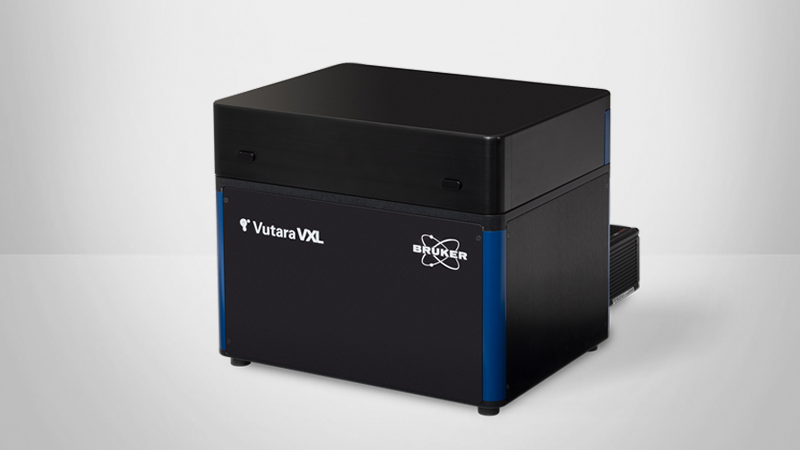SRX Software
Quantitative Analysis with SRX Software
Image →
Localize →
Visualize →
Analyze
Biological Imaging Is a Quantitative Discipline
While images themselves can be visually impressive and provide qualitative, descriptive information, biological imaging is focusing more on quantitative measurements. Quantitative measurements are allowing scientists to test and examine hypotheses and conduct data driven experiments.
Localization microscopy generates sets of precise molecular location data over a period of time. This data is then used to create images. The localization data allows for direct quantitative analysis of molecular positions in a sample, providing a fundamentally different type of analysis than is possible with image based techniques such as STED and SIM.
Types of Measurements Available Within the SRX Software
SRX software provides a number of tools to allow a user to perform measurements based upon statistical analysis of the acquired localization data. Measurements include spatial distribution, cluster analysis, co-localization, resolution analysis, live cell analysis and generation of control data for modeling.
Spatial Distribution
Experiments examining spatial distribution of localization data are a fundamental analysis, and can be a precursor to additional levels of analysis. Spatial distribution measurements provide valuable information regarding the density of localizations within different regions of the cell. Comparison of localization distribution differences between cell regions or differences in the same cell region across treatments or conditions provide can provide useful insights into molecular composition and provide inferences valuable in understanding pathways and molecular function. Tools provided for analyzing distribution include Ripley’s K, Pair Correlation and Nearest Neighbors.
Cluster Analysis
Molecules often form clusters, which can easily be discerned through spatial distribution analysis. The potential presence of clusters is often assumed or hypothesized before an experiment, based on findings with other light microscopy modalities such as confocal.
The significance of molecules existing in clusters may be related to their structural role, their functional role, or both. Clusters may form under certain circumstances having to do with a change in conditions in a cell. Clusters may also change composition under different conditions. Cluster formation and composition may also be related to other clusters or molecules (see co-localization).
Cluster analysis provides more detailed analysis of clusters that are observed in a sample. The cluster analysis dialog allows a user to set parameters for cluster analysis such as particle type, cluster size, and particle count, and has display functions to help visualize cluster formation, and has a variety of measurement parameters for viewing and output to .csv or .mat files. Cluster visualization can also be displayed in the main SRX visualization window, and can be use used to filter data.
Cluster analysis measurements include particle counts, cluster area, cluster density, cluster size (volume), centroid position, and PCA analysis.
Co-localization
Co-localization is a natural extension of cluster analysis and spatial analysis, and allows a user to examine the relationship of clusters of different types of molecules as well as the relationship of molecules not forming clusters.
The cluster analysis dialog allows the user to configure measurements for different cluster types of molecules. Output shows graphic display of co-localization measurements, tabular data, as well as displaying image results in the SRX visualization window. Co-localization data can be output in .csv and .dat format.
Co-localization measurements include Mander’s Overlap Coefficient, Intensity Correlation Quotient, Pair Correlation, Nearest Neighbors, Joint Histogram and Storm-RLA Cluster Analysis.
DNA and RNA Localization
Fluorescence in situ hybridization (FISH) is a technique used for the visualization of DNA, either specific genes or portions of genes, within a cell. Similarly, single molecule fluorescence in situ hybridization (smFISH) is a cutting-edge technique for studying gene expression in single cells but differs by its ability to image and quantify individual RNA molecules. In both techniques, targets are imaged via the hybridization of fluorescently labeled probes that are complementary to the target sequence. The FISH and smFISH modules included in SRX software enable a supported workflow for data acquisition, multiplexing, cell/nucleus segmentation, localization, drift correction, and statistical analysis.
Live-Cell Analysis
Live-cell experiments often need to quantify location changes of particles or clusters (objects) over time. Live cell analysis tracks particle displacement and display their movement over time.
Distance, velocity, and angular distribution histogram plots can then be generated from this data to assist with analysis. Graphical displays and movement plots can be output as images, and tabular data can be output as .csv and .mat files.
